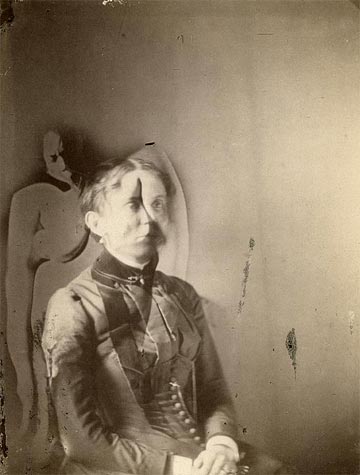“Does superstition embarrass investment in real estate?” asked the Omaha Sunday Bee on September 24, 1899. “There never was a landlord or rental agent who managed many estates or properties but had to contend with this more or less knotty problem.” The tale told to a Bee reporter by an unnamed Omaha real estate agent who had faced such a quandary, may be of special interest as Halloween approaches:
“Omaha has had several so-called haunted houses, . . . Away back in 1870 there was one I remember in particular because of a personal experience. . . . The property [near Twenty-fourth and Vinton streets] had been owned by an old German, a shoemaker, who, with his family of five, lived in the cottage. During the severe winter of 1869 the people became poverty-stricken, the shoemaker’s ill-health being the cause, and one by one they died — the mother first and the children afterwards. The old German was too poor to afford funerals, so he burled his family on his own grounds not far from the house. In the spring he also died and was buried in one of the cemeteries by some of his relatives from the east, who claimed the property and sold it. The family had no intimate friends and few acquaintances, so the circumstances of their sudden demise were never known, but townspeople believed the cause to have been starvation.
“The house stood unoccupied while its sale was being negotiated, and before the year was up rumors became current that it was haunted. People said that on dark, still nights the ghosts of the old German woman and her children danced on their graves. . . . [N]obody could be induced to live in it, even rent free.”
The house’s evil reputation grew with the story of a transient who claimed to have spent a night in the kitchen of the empty structure and been awakened by “a weird apparition. Tramping noiselessly from closet to larder and from larder back again to the closet, in search of something to eat, were the phantom figures of the old German woman and her children. Their forms were of vapor and shone like phosphorous.”
Finally the exasperated real estate agent spent a night in the house himself, intending to expose what he suspected were pranks by neighborhood boys. However, he too saw ghosts, “like blue streams of fire,” hovering above the yard. His explanation: “The ghosts were . . . the phosphorescent fumes due to the decomposition of the organic gases thrown off by the bodies, half covered as they were, in the still, humid air. In the winter when the ground was frozen the shoemaker had been unable to dig far below the surface.” The agent admitted, however, that few believed his theory, which failed to account for spectral appearances inside the house. The structure was later torn down.

In 1861 a Boston photographer named William H. Mumler discovered that additional images would appear if a glass photographic plate was exposed twice. Some believed that these ghostly double exposures proved the existence of spirits. RG3507-11-8



